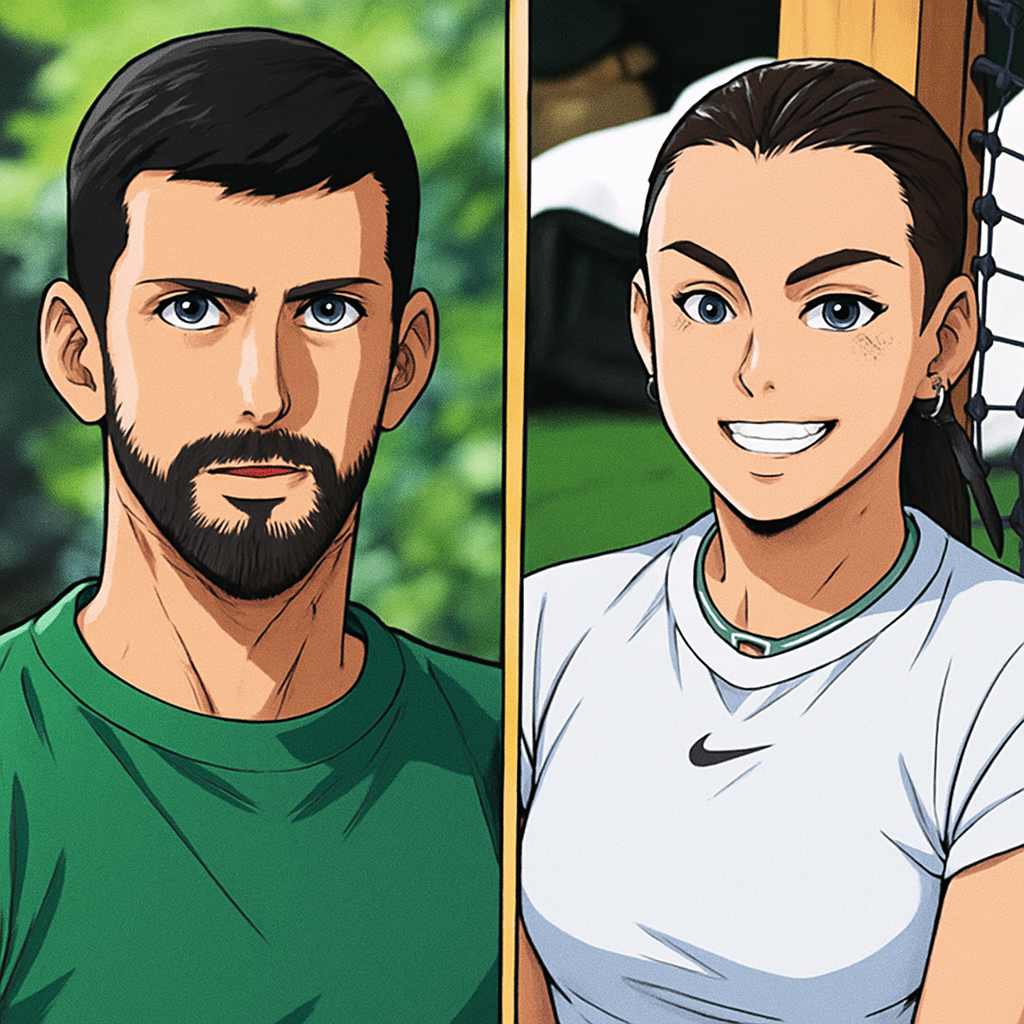LONDON — Novak Djokovic, the 24-time Grand Slam champion, raised eyebrows during a practice session with Aryna Sabalenka at Wimbledon on Wednesday, calling out the Belarusian star for what he described as "a hindrance" during their shared training session on the famed grass courts.
The incident occurred during a high-intensity practice match between the two players, who are both top seeds at this year’s Championships. According to onlookers, Djokovic, known for his meticulous approach to training, appeared visibly frustrated with Sabalenka’s vocal grunting and movement patterns during rallies. At one point, he reportedly stopped play to address the issue directly.
Djokovic’s Frustration Boils Over
Eyewitnesses noted that Djokovic, who rarely shows irritation during practice, paused mid-rally and approached Sabalenka, saying, "You’re moving too early—it’s a hindrance." The comment referred to Sabalenka’s tendency to adjust her positioning before Djokovic had completed his shot, a tactic some players use to gain an early advantage but which can disrupt an opponent’s rhythm.
Sabalenka, the reigning Australian Open champion, reportedly laughed off the remark initially but later adjusted her footwork. A source close to the session told reporters, "Aryna didn’t take it personally, but she did tone it down after that."
The Fine Line Between Gamesmanship and Fair Play
The exchange highlights the often-unspoken tensions that arise during elite-level practice sessions, where players test boundaries while preparing for high-stakes matches. Hindrance calls are rare in professional tennis but not unheard of—especially in matches where players like Sabalenka are known for their loud grunting or aggressive court positioning.
Key factors that can lead to hindrance disputes include:
- Early movement before an opponent’s shot
- Excessive grunting or vocalizations
- Deliberate distractions, such as towel breaks or extended ball bouncing
Djokovic, a seven-time Wimbledon champion, has historically been vocal about maintaining fairness in tennis. In 2021, he criticized Nick Kyrgios for similar tactics during their heated match at the Australian Open, stating, "There’s a line between gamesmanship and disrespect."
Sabalenka’s Response
When asked about the incident during her post-practice press conference, Sabalenka downplayed the tension, saying, "Novak is a perfectionist, and I respect that. We were just working on things. No hard feelings—it’s all part of the process."
However, some analysts speculate that the interaction could hint at underlying competitive friction. Sabalenka, who has been dominant on hard courts, is still refining her grass-court game, while Djokovic remains the undisputed king of Wimbledon with an 86% win rate at the All England Club.
Historical Context of Hindrance Calls
This isn’t the first time hindrance has been a talking point at Wimbledon. In 2019, Serena Williams received a controversial hindrance call during her semifinal against Barbora Strýcová after shouting mid-point. The rule, as outlined in the ITF’s Official Rulebook, states: "A player shall not hinder an opponent in making a stroke, including through audible or visible distractions."
Notable past incidents include:
- Maria Sharapova’s grunting drawing complaints from opponents in the early 2010s
- Rafael Nadal’s time violations for excessive ball bouncing
- Monica Seles’ iconic two-handed grunt, which became a signature but also a point of contention
What This Means for Wimbledon
With both players in contention for the title, the practice session drama adds an intriguing subplot to this year’s tournament. Djokovic, seeking a record-tying eighth Wimbledon crown, faces pressure to defend his status as the grass-court favorite. Sabalenka, meanwhile, aims to prove she can translate her hard-court success to grass.
Tennis commentator Mary Carillo weighed in, saying, "These practice moments matter. They reveal how players handle adversity, even in low-stakes settings. Novak’s reaction shows he’s in championship mode already."
Conclusion: A Glimpse Into Competitive Mindsets
While the incident was minor, it underscores the intensity of elite tennis preparation. Djokovic’s willingness to address perceived hindrances—even in practice—reflects his relentless standards. Sabalenka’s ability to adapt without confrontation demonstrates her growing maturity as a top player.
As Wimbledon progresses, all eyes will be on whether this exchange fuels Djokovic’s focus or adds extra motivation for Sabalenka to silence critics with her performance. One thing is certain: in the pressure cooker of Grand Slam tennis, even practice sessions can reveal championship mettle.

